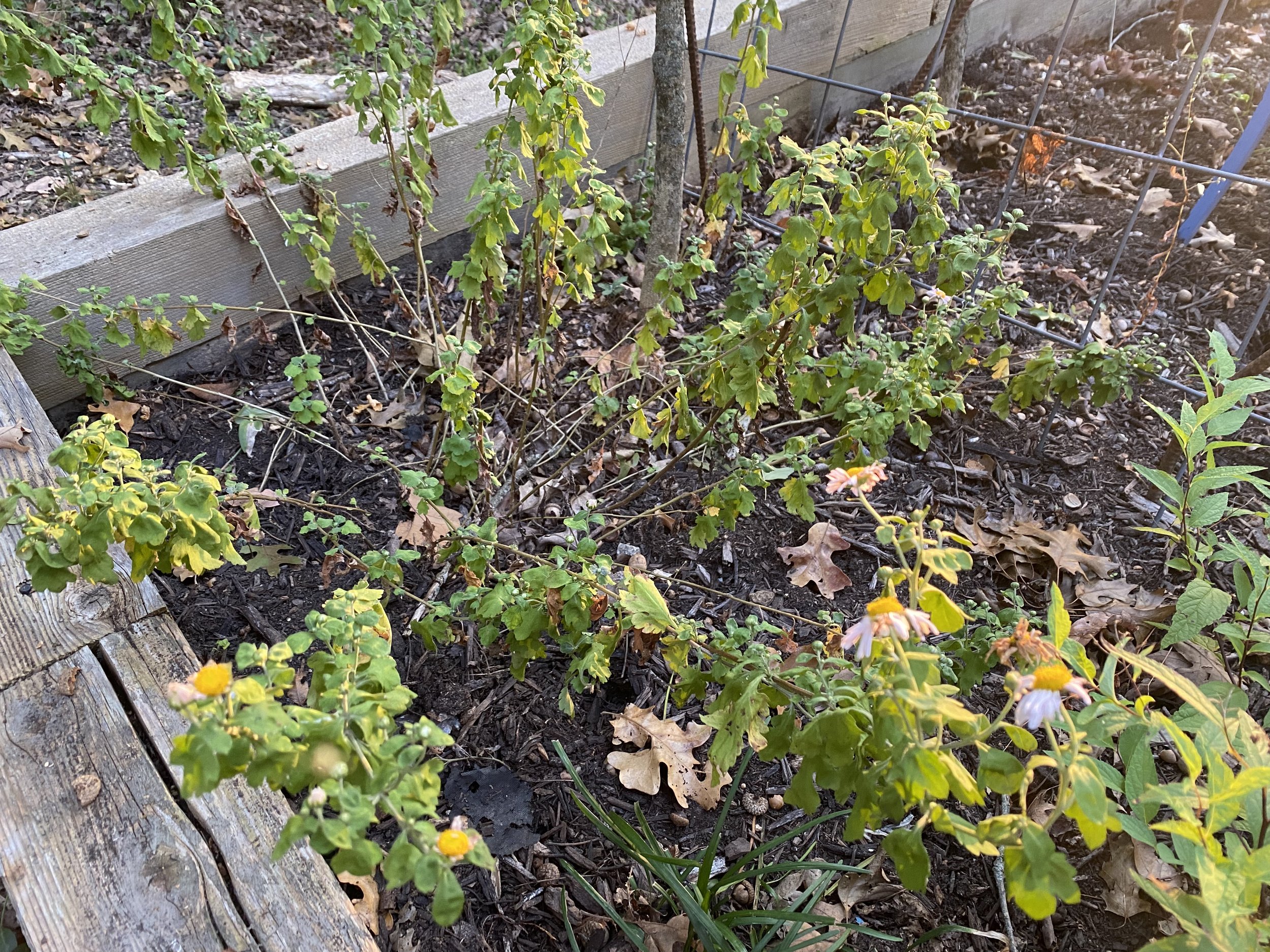Round Mums
/one of my non-trimmed mums is getting ready to bloom. (charlotte ekker wiggins photo)
“Charlotte I saw your posts on wintering mums. Mine are all sprawling with long stems. Is there a species that grows round and compact? Thanks for your help.” — Allison
Round Mums
Hi Allison, wouldn’t that be nice if there were a mum species that grew trim and round.
The round mums you’re seeing this time of year have been trimmed through spring and summer. I don’t trim mine because I want the long stems for cut flowers but they certainly look like they could use a trim or two.
Here's a step-by-step guide on how to trim mums for round fall shapes:
Spring Trimming (Late Spring/Early Summer):
Wait for New Growth: In late spring or early summer, wait until you see new green growth emerging from the base of the plant. This indicates that the plant has started its active growing period.
Pinch the Tips: Start pinching after 5 inches of new growth. Using your fingers or pruning shears, pinch off the top 1-2 inches of each stem. Pinching involves removing the soft, new growth at the tips of the stems. This encourages branching and results in a bushier plant.
Regular Pinching: Continue to pinch back the tips of the stems every few weeks during the spring and early summer. This encourages the development of more branches and ultimately more flower buds.
Summer Trimming (Mid to Late Summer):
Stop Pinching: Around mid-summer, typically in early July, stop pinching the tips of the stems. This allows the plant to allocate its energy toward developing flower buds for the fall bloom.
Deadhead Spent Blooms: Throughout summer remove faded or spent flowers. This process, called deadheading, redirects the plant's energy from seed production back into the growth of the plant.
Additional Tips:
Fertilize: Provide your mums with a balanced, water-soluble fertilizer every 2-4 weeks during the growing season. This helps promote healthy growth and abundant blooms.
Watering: Ensure your mums receive consistent watering. They prefer soil that is evenly moist but not waterlogged. Water deeply when the top inch of soil feels dry.
Sunlight: Mums need at least 6 hours of direct sunlight daily for best growth and blooming.
Support: If your mums become tall and leggy, consider staking them to provide support. This helps prevent bending or breaking of the stems, especially when the plant is heavy with blooms.
another non-trimmed mum has long, twisting stems. (charlotte Ekker wiggins photo)
Here’s another one of my mums that didn’t get trimmed. This rusty red mum is growing with curved long stems, which will add interest in a flower vase but isn’t very pretty for a landscaped garden.
One more thing. If you’re going to plant mums this fall, don’t toss them when they are finished blooming, you can keep them going through winter. Frankly the best time to plant mums is in spring but they are usually not available then.
Charlotte













